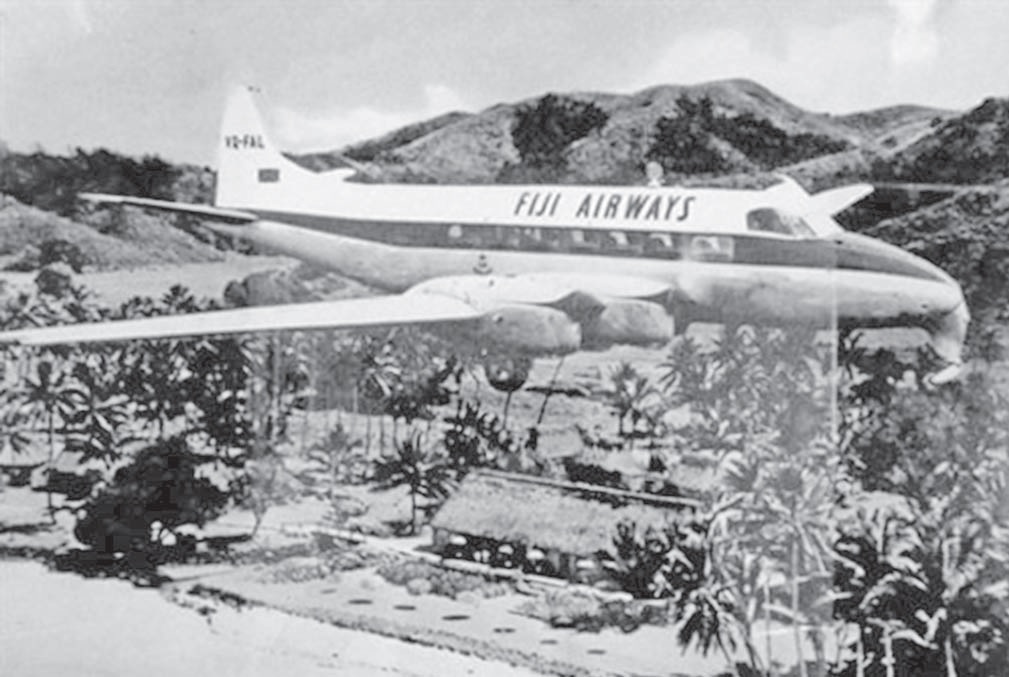PART 4
In September 1958, Fiji Airways was bought from Harold Gatty by Qantas Airways and by 1968 had become a consortium of four major shareholder: Qantas, BOAC (British Airways) and Air New Zealand in 1960 and the Fiji Government in 1965.
In the late sixties other minor shareholders emerged — Tonga, the Solomons, The Gilbert Islands and Tuvalu in 1960 and Western Samoa and Nauru in 1969.
In 1959, Fiji Airways acquired its first De Havilland Heron aircraft.
By 1966, 7 Herons were flying and the regional network began to take shape.
Flights to Tonga began in March 1959, New Hebrides and the Solomons in December 1960, Western Samoa in December 1961 and Gilbert & Ellice Islands in 1964.
By the end of 1969, the fleet had grown to four Herons and four Hawker Siddeley 784s.
The company also expanded its regional network to Nauru in June 1968, Port Moresby in February 1969, Brisbane in June 1973 and Auckland in May 1974.
Although flights into Brisbane and Auckland were via Honiara and Tonga respectively, these new routes formed the “first step” towards international carrier type operation.
Landing rights had been obtained for services to Pagopago, Majuro, Rarotonga and Noumea. Services were started to Brisbane via Noumea in July 1975.
Additionally Air Niugini had been contracted in mid-1975 to operate the Honiara-Port Moresby sector using their equipment and our service number.
In 1965, the first DC3 arrived, on loan from Qantas, and by 1972, two DC3s and 44 Herons operated the domestic service routes.
The HS748 during the same period continued to perform admirably in international routes which extended over approximately two million square miles.
July 31, 1971 is an important date in the history of the airline.
The name Fiji Airways was officially changed to Air Pacific Ltd on that day to represent coverage of the Pacific and to indicate the participation by the other islands who felt that the former name did not reflect the involvement of various island governments in the company.
Another milestone in the company history was the decision to ‘go jet”.
Following a study by Qantas, the company bought a twin jet aircraft, the BAC 1-11, which began services on South Pacific routes in April of the same year.
- This article was part of a supplement in The Fiji Times compiled by Kim Gravelle


